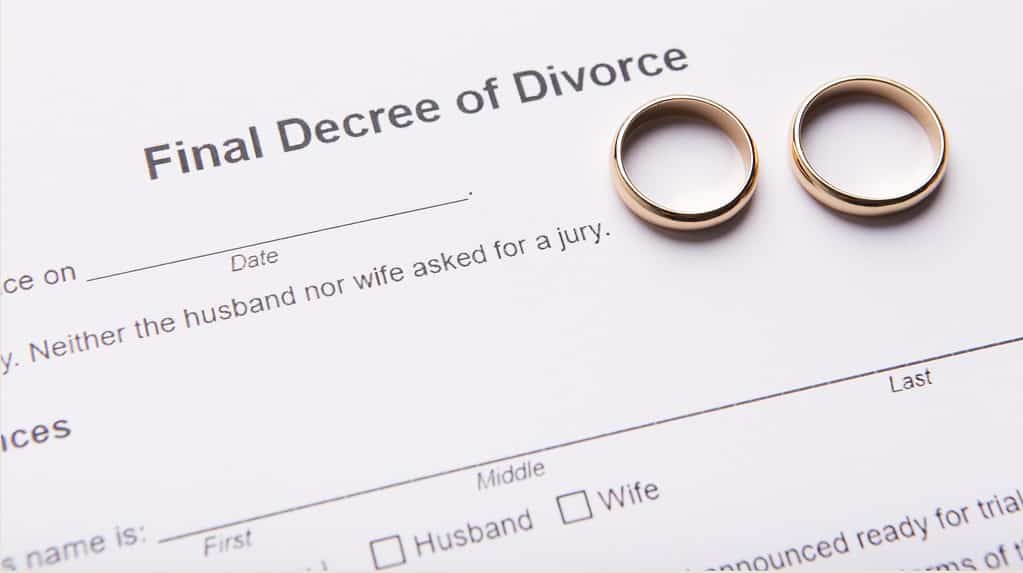If you have decided that your husband/wife is better off being your ex, then you need to file for a divorce to legalize your separation. Depending on how things are, you can choose to file for an uncontested or contested divorce.
An uncontested divorce will only work if you are still in good terms with your partner, and you can sit down and solve your issues amicably. However, if things have already gone south- which is the case most of the times- then your only hope of getting what you deserve out of the marriage is filing for a contested divorce.

In a contested divorce, your case will be heard by a judge who will decide on sticky issues such as child support, child custody, and division of marital assets. But the process can be stressful and may take a significant amount of time before it is settled.
In this post, we discuss the steps involved in a contested divorce and how a divorce attorney can help you.
1. Hiring and Meeting with a Divorce Attorney
If you have decided to file for a contested divorce, the first thing you need to do is hire an experienced divorce attorney who will fight for your rights and interests. Make sure you hire the right attorney because he/she will have a significant impact on the outcome of your case.
Once you have hired an attorney, he/she will set up a meeting with you to discuss your case. During the meeting, your attorney will gather all information pertaining to children, marital assets, and any other issue you feel pertinent.
From there, he/she will want to determine what they think you are entitled to and start preparing your divorce petition. During this phase, you will need to gather all essential documents and hand them over to your attorney.
You should also inform the attorney what you want him/her to fight for in the petition in regard to child support, child custody, alimony, and division of property/debts.
2. Processing the Paperwork and Serving a petition to Your Spouse
Once you have ironed out everything with your attorney, it is time to start processing the paperwork that will initiate divorce proceedings. To do that, you need to serve divorce papers to your partner.
If you are the person initiating the divorce, then you become the petitioner, but if you have been served with the divorce papers, then you become the respondent in the case.

You can serve the divorce papers to your partner by yourself or have a local police sheriff do it on your behalf. In most states, it is not your legal responsibility to serve the divorce papers, but if you are still living together, it becomes easier.
If you are no longer living together and your partner can’t be traced, a notice may be published in a local newspaper notifying him/her of the petition.
Once served, your partner will have at least 30 days to respond to the petition. If he/she doesn’t respond within the specified period, you may receive a default judgment from the court in your favor.
3. Discovery Phase
During this phase, both parties are allowed to obtain as much information as possible from each other. The information obtained pertains to child custody, income, marital assets, marital debts, and any other information relevant to the case.
The discovery is done through document requests, written interrogatories, and depositions. During this stage, one spouse can request for temporary orders for child custody and support from the court.
The judge in your case may fix a time limit on when you need to respond to all document requests. But don’t expect your partner to cooperate fully because he/she may want to miss the deadline deliberately to slow down the divorce process or hide some of the assets.
Therefore, it is your responsibility to keep your partner on toes if he/she doesn’t respond to your requests within the stipulated time.
4. Settlement
In most cases, the presiding judge will encourage the divorcing parties to try and come up with an amicable agreement before the case moves to trial.
The judge may even order both of you to go to mediation where an independent third party will attempt to resolve some of the sticky issues. If you are unable to settle your disagreements, the case will proceed to trial.
5. Trial
If mediation fails, then your case enters the trial stage where all unresolved issues will be determined by a judge. Keep in mind that when a divorce case proceeds to trial, attorney fees and other costs tend to rise exponentially. It can also drag on for quite some time.
During the trial, the judge will set a date to hear both sides then make a decision based on the evidence presented before the court. Typically, the length of time required to complete your case will depend on the complexities of the divorce.
6. Post-trial Motion and Appeal
If you are dissatisfied with the outcome of the trial stage, you will have 30 days to file post-trial motion for relief from the final judgment. Your partner will have another 30 days to respond to your post-trial motion.
If your post-trial motion is approved, you will be granted another chance to argue why you believe the ruling was unfair.

However, if the post-trial motion is denied, then you are free to proceed to appeal the judgment. In most states, the party seeking appeal will be granted a few months to file the lower court record with the appeals court to initiate the appeal process.
The other party will have up to 30 days to file a response, and both parties will be granted oral argument in a court before a final judgment is passed.
Filing for Divorce Can Be Painful, but We Are Here to Help You
At Legal Giant, we understand the pain of having to go through a divorce. That is why we have a team of experienced divorce attorneys who will take up your case and guide you through the process while fighting for your rights and interests.
Our attorneys understand that much is at stake and they will do everything possible to get you what you deserve. Contact us today and let us help you with your divorce case!

